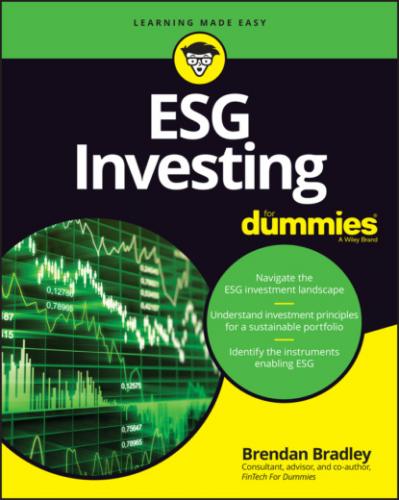1987: The Brundtland Commission (Our Common Future) report recognized that human resource development in the form of poverty reduction, gender equity, and wealth redistribution was crucial to formulating strategies for environmental conservation. It introduced the most widely accepted definition of “sustainable development” — that is, “development which meets the needs of current generations without compromising the ability of future generations to meet their own needs.”
1992: The United Nations’ Earth Summit, which took place in Rio de Janeiro, marked the largest environmental conference ever held, with 172 governments in attendance. The Summit’s message — “nothing less than a transformation of our attitudes and behavior would bring about the necessary changes to preserve the planet” — was transmitted around the world. Also, the United Nations Framework Convention on Climate Change (UNFCCC) and the UN Convention on Biodiversity were both signed.
1993: Investors began to exert pressure on fund managers to avoid investing in South African companies due to that country’s apartheid policy.
1997: The Global Reporting Initiative (GRI; see Chapters 1 and 15) was founded, with the aim to create the first accountability mechanism ensuring that companies adhere to responsible environmental conduct principles. This was later broadened to include social, economic, and governance issues.
The 21st century
With the arrival of the 21st century, the world’s focus on responsible investing has fully incorporated issues around global warming, diversity and inclusion, and associated corporate governance principles in what people know as ESG:
2000: Norway’s Government Pension Fund and the largest pension fund in the United States, CalPERS (the California Public Employees’ Retirement System), committed to 100 percent integration of sustainability principles over 15 years.
2006: The Principles for Responsible Investment (PRI; see Chapter 1), a set of six investment principles encouraging ESG matters to be incorporated into investment practice, were launched by the United Nations. The principles were developed “by investors for investors.” They are voluntary principles but have attracted more than 3,000 signatories from over 60 countries, representing over US$100 trillion.
2009: The Global Impact Investing Network (GIIN), a not-for-profit organization devoted to increasing the effectiveness of impact investing, was launched.
2011: The Sustainability Accounting Standards Board (SASB; see Chapters 1 and 15), a non-profit organization, was founded to develop sustainability accounting standards.
2012: A new edition of International Finance Corporation’s (IFC’s) Sustainability Framework, which includes the Environmental and Social Performance Standards defining responsibilities for managing environmental and social risks, was published.
2015: The United Nations (UN) Sustainable Development Goals (SDGs) were established. They serve as a blueprint for significantly changing the world by ending global poverty, safeguarding the planet, and ensuring prosperity for all by 2030. Also, 195 countries adopted the first-ever universal, legally binding global climate deal with the Paris Agreement (a much more extensive follow-up to the original Kyoto Protocol in 1997). For more information on the SDGs, see Chapters 1 and 15.
2016: The Global Reporting Initiative (GRI) converted its reporting guidance to the first global standards for sustainability reporting, featuring a modular, interrelated structure representing global best practices for reporting on economic, environmental, and social impacts. See Chapter 1 for details.
2017: In a new European Union (EU) Pensions Directive, member states have an obligation to “allow Institutions for Occupational Retirement Provisions (IORPs) EU pensions to take into account the potential long-term impact of investment decisions on ESG factors.”
2017: The Task Force on Climate-Related Financial Disclosures (TCFD) published its recommendations on climate disclosures. They were based around four thematic areas that represent core elements of how organizations operate: governance, strategy, risk management, and metrics and targets. These thematic areas are designed to interlink and inform one another. (For more information, see www.tcfdhub.org/recommendations/.)
2019: This year marks the tenth-year anniversary of the United Nation’s Sustainable Stock Exchange initiative, which is committed to promoting debate about ESG issues among issuing companies and investors. Most global stock exchanges are part of the initiative.
2020: The final report on EU taxonomy was published (developed by the Technical Expert Group [TEG] on Sustainable Finance), which contains recommendations on the overarching design of the taxonomy, and guidance on how companies and financial institutions can make disclosures using the taxonomy to improve the coverage of disclosed data. See Chapter 1 for more information.
2020: The COVID-19 crisis provoked a shift in investor perception of social factors, which have a critical and constructive impact on long-term value creation and risk mitigation. The Black Lives Matter demonstrations also highlighted interconnections in the way companies approach social issues, including treatment of employees and inequalities, in their long-term sustainability strategy. These events, allied to ongoing environmental issues, will be a game changer for ESG investing.
Go green: The changing global environment
As you may know, the major contributors to the buildup of greenhouse gases include the burning of fossil fuels for heating and energy creation and the use of chlorofluorocarbons (CFCs) as aerosols and coolants. Air pollutants include carbon monoxide, lead, sulfur dioxide, and nitrogen dioxide, which are all by-products of industrial and energy-creation processes. Moreover, stratospheric holes in the ozone layer are considered to be a direct result of the buildup of CFCs in the upper atmosphere.
Therefore, to tackle climate change and decarbonize the global economy, there’s a need to generate political action, social change, and financial support. The COVID-19 pandemic has shown that, faced with an imminent humanitarian crisis, a huge amount of political action can be implemented very quickly. Also, societies have changed their behaviors in a matter of weeks, and there’s been a great deal of financial backing to support these measures. The scale and pace of change for environmental concerns hasn’t been anywhere near comparable, but the pandemic may be a catalyst for further environmental action, with a greater emphasis on climate change after the crisis.
